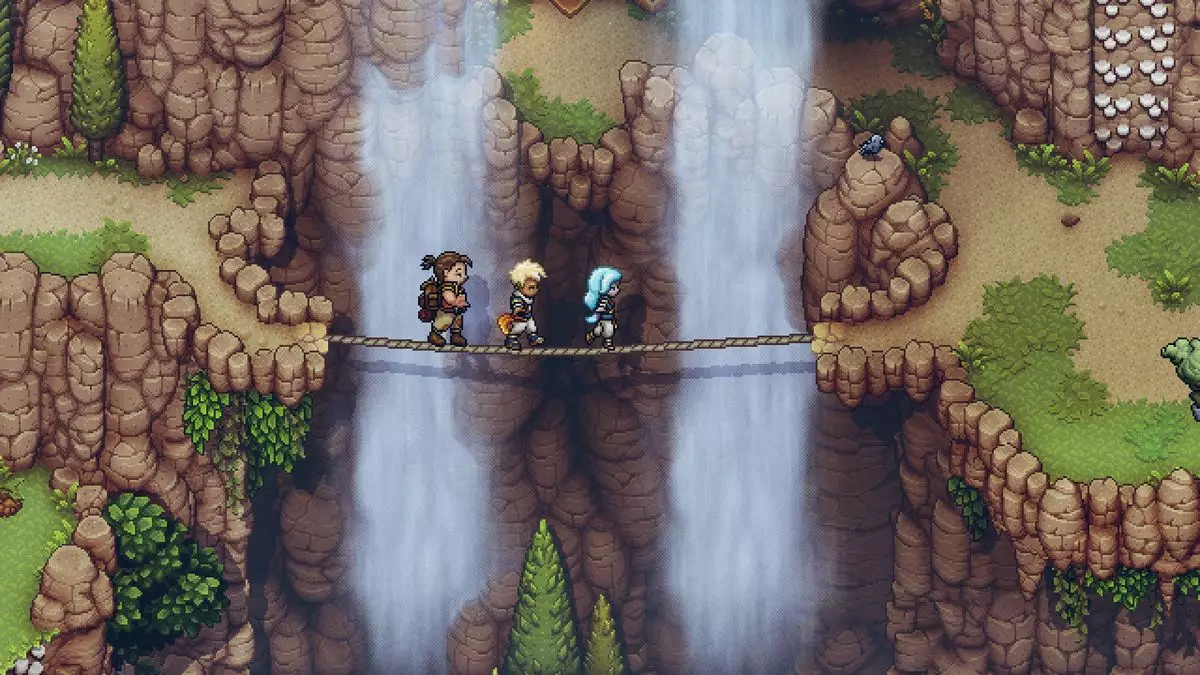Indie game development has often drawn heavily from the annals of gaming’s golden age, but few titles resonate as deeply as Sabotage Studio’s recent release, Sea of Stars. As a spiritual successor to their acclaimed 2D action platformer, The Messenger, this latest installment stands as a calculated homage to the beloved Japanese role-playing games (JRPGs) of the past. With a clear inspiration stemming from iconic titles like Chrono Trigger and Secret of Mana, Sea of Stars brings not only nostalgia but also a thoughtful reinvention of classic gaming mechanics, creating a fresh experience for both new players and seasoned veterans.
Thierry Boulanger, the game director, elucidates the profound influence of Nintendo on the team’s vision. Their reverence for the gaming titan is palpable; Boulanger emphasizes that Nintendo’s output from the 1980s and 1990s serves as a template for their own design philosophy. This reverence is not merely cursory; it manifests through the meticulous adoption of game design principles that continue to resonate through modern gaming. The emotional and aesthetic ties players formed with Nintendo classics serve as a guiding light for Sabotage Studio, driving them to capture that same essence in a modern context.
The relationship between nostalgia and innovation is a delicate balance. While many indie developers pay professional tribute to game design philosophies echoed through Nintendo’s storied history, Sabotage Studio distinguishes itself by integrating contemporary gameplay mechanics into their retro-inspired framework. Sea of Stars does not merely mimic its inspirations; rather, it entwines old-school charm with features that enhance playability and engagement. The incorporation of cooperative gameplay stands out as a characteristic modern touch, reshaping the traditional JRPG experience into something dynamic and collaborative.
A hallmark of both The Messenger and Sea of Stars is their ability to seamlessly navigate the contrasts between different gaming eras. The Messenger not only hearkens back to classic action gameplay but also invites players to toggle between 8-bit and 16-bit graphics, encapsulating the best characteristics of both styles. Likewise, Sea of Stars blends turn-based combat with real-time co-op elements, enriching the player’s involvement in the action and modernizing the narrative experience common to JRPGs.
Boulanger’s assertion that every Nintendo title contains invaluable lessons is indeed insightful. He cites the enduring impact of games such as Super Mario Bros. 3 as paramount learning tools in understanding mechanics like level design, pacing, and sound. This commitment to learning from classics underpins the very fabric of Sea of Stars, ensuring that each element—from fireball mechanics to melodic soundscapes—is carefully crafted to yield the most engaging experience possible.
As the gaming industry continues to evolve, the influence of retro aesthetics remains poignant. With Sea of Stars, Sabotage Studio not only acknowledges the nostalgia of yesteryear but also demonstrates how creatively merging the past with the present can breathe new life into familiar formulas. This hybrid approach serves as a reminder that while the gaming landscape continues to shift, the core tenets derived from classic design can yield an invigorating experience that appeals across generations. Ultimately, Sea of Stars is a testament to the power of storytelling in gaming, charting a course through time while remaining relevant in an ever-changing digital age.


Leave a Reply